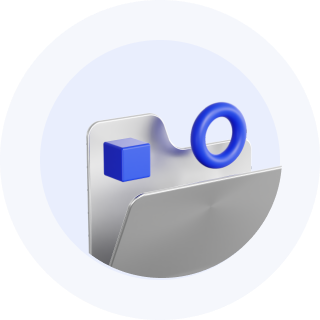
Contact us
Our team would love to hear from you.

An AR is a structured evaluation of a subject against established criteria. The subject of the review may be an individual software system, an integrated solution composed of multiple systems, a project, or even an entire project portfolio. Since the scope and complexity of each subject vary, the composition of the review team and the review timeline are defined individually. Depending on the case, an AR may take from one week to several months to complete.
The goal of the AR is to confirm that the subject’s architecture and processes align with:
In practice, ARs assess how well the overall setup (architecture, people, process, tools) supports existing business needs, and ensure that it is ready for planned business changes and associated growth. Unlike code reviews, which focus solely on implementation, ARs take a holistic view of how teams collaborate, which tools and technologies are used, how solution components interact, and whether these choices align with both industry best practices and strategic goals.
The outcome of an AR is the AR document (ARD), a clear, actionable plan that:
ARs are valuable not only for large enterprises with complex systems but also for growing Small and Medium-sized Businesses (SMBs). They are particularly important when a company or product begins to scale and encounters performance limitations, inefficiencies, or uncertainty about whether the current setup can support future growth.
When a review subject reaches these limits, businesses often face uncertainty about the next step. An AR helps define the most effective way forward, which may include:
Several of these approaches can also be combined to achieve long-term stability and scalability.
Businesses often operate without full visibility into their system architecture. ARs close this gap by revealing hidden risks, inefficiencies, and improvement opportunities. The business benefits of an AR are clear.
These findings can often be acted upon as soon as they are identified. An AR also helps IT teams more effectively communicate the sensitivity and potential impact of security issues to business stakeholders.
An AR can reveal inefficient resource configurations, overlapping tool usage, or suboptimal processes. Addressing these findings helps prevent overengineering, eliminate unnecessary complexity, and optimize infrastructure costs.
An AR helps businesses сonnect IT investments with strategic goals and prevents wasted effort.
At EffectiveSoft, we go beyond technical assessments. During ARs, our architects work with people, processes, and strategy across every business layer. We ensure that your business ecosystem is not only efficient and secure but also fully aligned with the company’s goals and growth strategy.
ARs are most valuable when a business is planning significant changes or when existing systems begin to show signs of strain. They provide an opportunity to bring in external expertise, evaluate whether current practices are efficient, and make timely adjustments before problems escalate.
Based on EffectiveSoft’s experience, there are several critical moments when an AR creates maximum value:
All these use cases tie back to the central idea: whether it’s scaling, adding new initiatives, integrating organizations, or addressing system strain, an AR ensures the system is ready to support the business effectively.

“An architecture review helps identify problems and opportunities for a solution within a specified business context. It provides an understanding of the current state and its compliance with the business objectives. The architecture review outlines a path for achieving what the business needs and helps in making business decisions.”
Senior Solution Architect
A successful AR requires not only technical assessment but a deep understanding of business context, goals, and constraints. At EffectiveSoft, we combine an engineering mindset and a problem-solving approach to deliver structured, logical solutions with measurable outcomes. Our AR process is transparent, collaborative, and tailored to each client’s unique needs.
In this phase, we gather initial information about the client, their systems, and key pain points. We also determine the right stakeholders to engage, from business leaders to technical experts, to ensure that our review process is tailored to the customer’s specific needs and priorities.
We begin by identifying specific client demands and pain points to gain a thorough understanding. During this stage, our specialists conduct interviews with key stakeholders, research current IT systems and business architecture, evaluate how these align with customer experience (CX) and organizational goals, collect business and technical requirements, and document existing challenges.
Then, our architects perform a thorough assessment of the current architecture, focusing on scalability, security, maintainability, reliability, and performance. At this stage, we dive deep into existing artifacts, including system documentation, codebases, bug tracking systems, and other relevant resources to understand the system from every angle. This detailed analysis allows us to see how all components interact; identify risks, gaps, and potential design issues; and validate design decisions collaboratively with stakeholders.
Our team prepares an ARD, which includes an actionable list of recommendations with viable alternatives, focusing on optimal ways of moving forward with the solution in the business context. We prioritize recommendations based on risk severity and business impact, ensuring that critical matters are addressed first. All recommendations are thoroughly documented in the ARD, which also includes key architecture review summaries, recommendations, and a clear rationale provided by our architects.
At the conclusion of the review, we present the findings, summarize key insights, and provide actionable recommendations. This phase may lead to additional steps, such as identifying resources, setting up teams, or engaging the architect who conducted the review to guide team structure and responsibilities. In some cases, new projects may be launched based on the review’s outcomes, and our architects can support the initial stages by briefing the team, explaining recommendations, and ensuring a smooth handoff from review to execution.
Do you want to see recommendations turn into strategic actions? We are here to help. At EffectiveSoft, our engineers can assist with the implementation, modernization, and optimization of your architecture and provide ongoing guidance.
A London-based startup set out to digitize rental screening, streamline tenant verification, and help renters build credit through timely payments. EffectiveSoft undertook a comprehensive AR, code audit, and system reengineering to address fragmented microservices, weak inter-module communication, and scalability challenges.
We re-architected the platform’s core systems, unified data flows, and optimized service orchestration. The redesigned solution seamlessly integrates financial and credit data sources, supports rule-based risk assessment, and incorporates advanced fraud-detection capabilities.
The outcome: a robust, scalable fintech ecosystem serving over 500,000 renters, accelerating tenant onboarding, enhancing agent workflows, and improving credit reporting accuracy. The re-architected platform has positioned the startup among the top three players in the UK rental market.
An AR is more than a technical checkpoint—it is a business strategy enabler. It helps companies reduce risks, prevent costly mistakes, optimize costs, and prepare for sustainable growth.
If your current system feels like a bottleneck, or if you are planning a new large-scale project, it’s time to validate your architecture. EffectiveSoft can guide you from review to road map to implementation.

A code review checks how the code is written. An AR evaluates what is being built and whether the overall system design will scale, perform, and stay maintainable. It also includes processes in scope.
Solution architecture (SA) defines the blueprint. AR validates it, making sure design decisions are sound and aligned with business and technical goals.
Architects, senior engineers, domain experts, and stakeholders from both the client and EffectiveSoft are involved in the AR. It’s a collaborative process, not just a technical audit.
An ARD provides structure and transparency. It outlines risks, decisions, and recommendations, making it easier to align everyone before development begins. If you have never had an ARD before, that’s no problem. Our architecture will create an ARD for you after the AR.
Yes—we don’t just stop at the review. Our engineers help you implement recommendations, adjust the architecture if needed, and guide your team through the process.
They risk technical debt, scalability issues, higher costs down the line, and delayed delivery.
Can’t find the answer you are looking for?
Contact us and we will get in touch with you shortly.
Our team would love to hear from you.
Fill out the form, and we’ve got you covered.
What happens next?
San Diego, California
4445 Eastgate Mall, Suite 200
92121, 1-800-288-9659
San Francisco, California
50 California St #1500
94111, 1-800-288-9659
Pittsburgh, Pennsylvania
One Oxford Centre, 500 Grant St Suite 2900
15219, 1-800-288-9659
Durham, North Carolina
RTP Meridian, 2530 Meridian Pkwy Suite 300
27713, 1-800-288-9659
San Jose, Costa Rica
Escazú Corporate Centre, Piso 6
40602, 1-800-288-9659